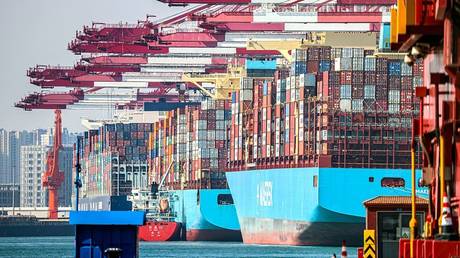Price Trends in China Stay Stable as the Economy Continues to Recover Steadily
China's stable price trend at the beginning of 2025 lays a crucial groundwork for the healthy functioning of the economy and presents ample room for adjustments in macroeconomic policy.

In January 2025, China's macroeconomy began to reveal its first significant data set. The National Bureau of Statistics published consumer price index (CPI) and producer price index (PPI) figures on Sunday, indicating a year-on-year increase of 0.5 percent and a month-on-month rise of 0.7 percent for the CPI. Meanwhile, the PPI showed a year-on-year decrease of 2.3 percent along with a month-on-month drop of 0.2 percent. The rise in CPI was largely influenced by the Spring Festival, while the decline in PPI remained consistent. This overall stable price trend at the start of 2025 establishes a crucial basis for healthy economic function and offers ample room for adjustments in macroeconomic policy.
The CPI serves as a primary indicator of price fluctuations in consumer goods and services, reflecting the costs associated with everyday items and services that households consume. Traditionally, January and February, particularly around the Spring Festival, see seasonal shifts in the CPI. This holiday, being the most significant traditional celebration in China, often correlates with a marked increase in consumption, particularly in food and service sectors.
Consumption typically spikes during the Spring Festival, with high demand for traditional holiday foods, including pork, vegetables, and seafood. Historical trends indicate that pork prices tend to rise leading up to the holiday, contributing to the CPI's upward movement. Additionally, increased spending on dining out, socializing, and travel during this period further escalates prices in the restaurant and tourism sectors. These factors combined can significantly impact the CPI in the short term.
Conversely, food prices at the onset of 2025 remained relatively stable, with no drastic fluctuations. Although some items, such as fresh vegetables, saw price hikes, these changes are primarily attributed to seasonal factors and are deemed normal. Government interventions aimed at stabilizing food prices, including maintaining pork reserves and ensuring supply, have also positively influenced price stability. Overall, the seasonal increase in CPI due to holiday demand is moderate, keeping the growth rate for January within a reasonable limit.
Moreover, it is essential to monitor movements in non-food prices. At the beginning of 2025, service prices, particularly in transportation and tourism, have gone up in response to increased consumer interest in holiday activities and travel. Given these dynamics, the seasonal uptick in CPI aligns with expected trends.
Turning to the PPI, this index reflects price changes at the production level and has a direct effect on business production costs. Recent years have seen some fluctuations in China's PPI, driven by global commodity prices, domestic supply-side reforms, and structural adjustments within industries. However, since the start of 2025, the PPI has remained stable without significant changes.
From a global standpoint, commodity prices have largely stabilized, with key raw materials like oil, coal, and steel showing little volatility. This steadiness mitigates pressure on domestic manufacturing costs. Concurrently, China's ongoing structural reforms, especially within high-tech industries and green energy sectors, have bolstered PPI stability.
Domestically, overall production costs in manufacturing have shown stability since early 2025, with no significant volatility. Factors such as environmental regulations, overcapacity in certain areas, and market competition continue to pressure some industries. However, these pressures have been relatively mild and have not caused a sharp rise in the PPI. Consequently, the PPI for January recorded a year-on-year decrease of 2.3 percent.
With both CPI and PPI exhibiting a stable price trend at the year's start, the data supports ongoing economic operations in China. In the face of slowing economic growth, stability in pricing can help avert "stagflation," ensuring sustained macroeconomic health.
The early 2025 CPI and PPI figures not only reflect the short-term uptick in consumption resulting from the Chinese New Year but also highlight longer-term challenges, including inadequate domestic demand and the difficulties of industrial transformation. The present state of "stability" in price movements signifies a low-level equilibrium rather than a genuine improvement in the supply-demand relationship. Moving forward, policies must carefully balance growth stabilization with structural economic adjustments. Key initiatives like revitalizing the real estate sector, boosting household incomes, and advancing industrial upgrades are vital for fostering enduring momentum toward moderate price recovery and high-quality economic growth.
Looking ahead to the entirety of 2025, various factors will impact price trends. On one hand, external uncertainties, encompassing global economic conditions and international commodity prices, may introduce some fluctuations in the domestic PPI. On the other hand, domestic supply-side structural reforms, shifts in consumer demand, and government pricing policies will be crucial in shaping both the CPI and PPI.
Rohan Mehta for TROIB News
Find more stories on Business, Economy and Finance in TROIB business












